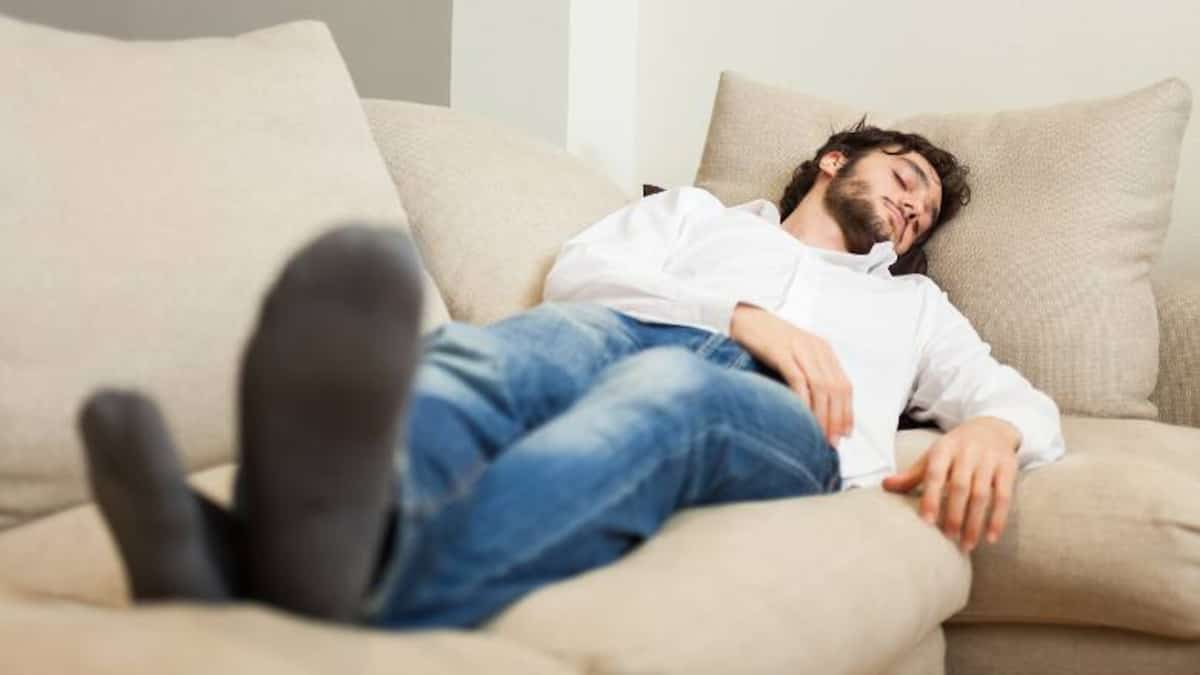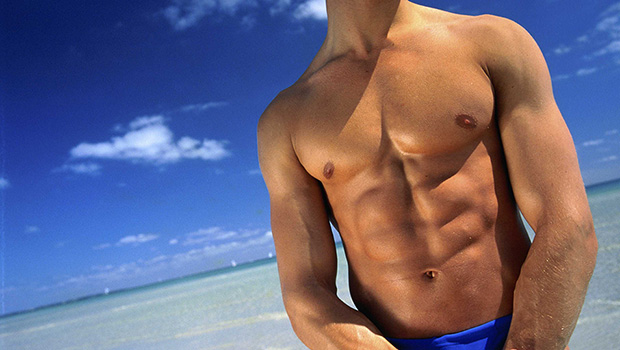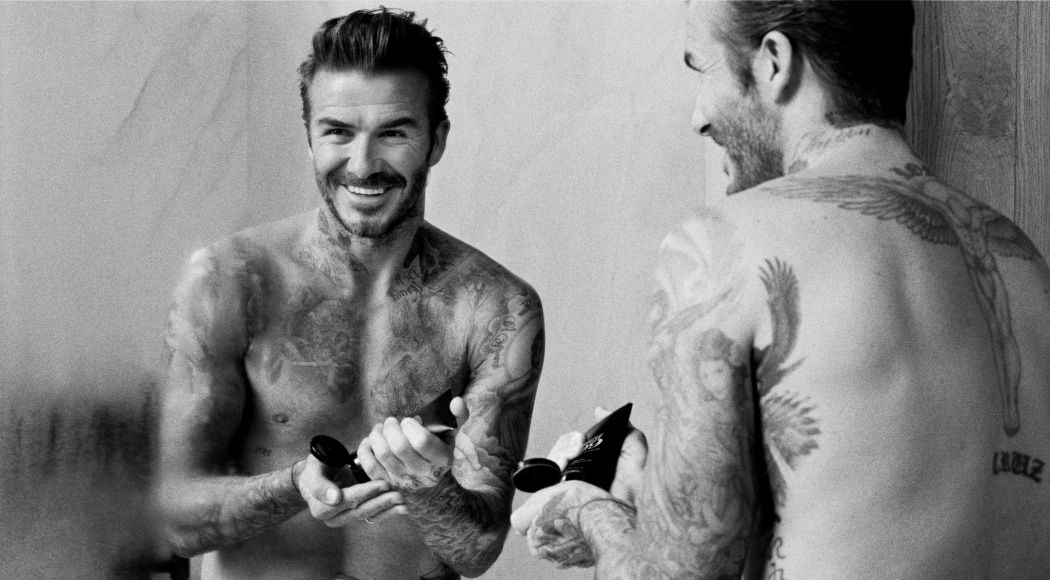Distance learning
Enseigner à l'ère de l'intelligence artificielle et des outils de génération de contenu
Teaching in the age of artificial intelligence and content creation tools
Source link
Nutrition tips for better sleep
Almost 30% of Canadians say they have trouble falling asleep or staying asleep. However, quality sleep is the key to health and vitality. My nutritional advice for better sleep:
The importance of sleep
Sleep is important for health. It ensures the proper functioning of the body and brain, including memory. In the long term, chronic sleep deprivation increases the risk of various health conditions, such as obesity, diabetes, cardiovascular disease, depression, and dementia.
Several factors can affect sleep, such as stress, excessive exposure to artificial light sources (such as mobile phones, televisions, etc.) in the evening, noisy environments, certain diseases (such as sleep apnea, chronic pain, etc.) : , hormonal fluctuations (menopause), as well as diet.
Good omega-3 fats
Studies have shown that low intakes of marine omega-3s can disrupt sleep by affecting the circadian rhythm. Knowing that our fish consumption in Quebec is low, it is appropriate to add a few servings of oily fish (salmon, tuna, trout, mackerel, sardines) to our weekly menu.
Lunch time
Eating too early can disrupt sleep because the brain, which is most active during paradoxical sleep, the stage of sleep associated with dreams, needs energy. Eating too late can also disrupt sleep due to increased body temperature caused by digestion, especially after protein-rich meals, which prolong digestion. However, for sleep, it is necessary to lower the body temperature. Therefore, it is preferable to have dinner at least two hours before going to bed. For families who often eat dinner earlier, having a snack before bed can be helpful.
Vitamin D
Vitamin D performs a number of functions in the body. Vitamin D deficiency is associated with poor sleep. Given that dietary sources are few, a daily supplement of 800 to 1,000 IU is recommended.
Melatonin
Melatonin is often used for sleep disorders. Studies show that melatonin at doses of 3 to 5 mg reduces sleep time, increases sleep time, and improves sleep quality. In some people, taking melatonin can cause side effects such as headache, nausea, dizziness, and drowsiness.
Beware of caffeine
Caffeine is a stimulant molecule found in coffee, tea, cocoa, and some energy drinks. It breaks up sleep, making it lighter and less deep. Avoiding caffeine a few hours before bed (4 to 6 hours) helps prevent sleep latency and night awakenings.
Passifloric
Native to the Amazon, passion flower is also said to promote sleep quality with its sedative and anti-anxiety properties. In a study published in 2020 involving 110 people with insomnia, passionflower significantly increased total sleep time compared to a placebo.
Valerian
Valerian is an herb that contains small amounts of GABA, a neurotransmitter that promotes sleep. Studies show shorter bedtimes and better quality sleep with 400mg doses taken two hours before bedtime.
The benefits of carbohydrates
Tryptophan is an amino acid required for the production of serotonin, a neurotransmitter required for the secretion of melatonin, the sleep hormone. Good sources of tryptophan are protein foods such as eggs, fish, poultry and milk. However, it is not easy to increase serotonin production through diet. Indeed, other amino acids in protein foods can compete with tryptophan. Consuming complex carbohydrates (eg, vegetables, legumes, whole grains) promotes the entry of tryptophan into the brain through the insulin production it triggers. Although carbohydrates are important, too many high-glycemic carbohydrates can disrupt deep sleep. It's all about balance.
Fruits: sleep allies
Several studies have documented the positive effects of cherries and kiwis on sleep.
Different types of cherries have been tested, and it is sour cherries with higher melatonin content that are said to have the most beneficial effects on sleep. As for kiwi, consuming two units an hour before bed can help you sleep.
Resources:
Do you have significant sleep problems? Do you suffer from chronic insomnia? Haleo offers a program based on cognitive-behavioral therapy that significantly improves sleep in just three weeks.
www.haleoclinic.com
Canadian guidelines recommend 7 to 9 hours of quality sleep for adults aged 18 to 64, and 7 to 8 hours for people aged 65 and older, on a regular basis, with consistent bedtimes and regular wake-up times for health benefits : Statistics Canada, 2022).
Full coverage
Full coverage
Source link
Your stream has been burned
Your stream is ready.
We remember the state of the page, and when new links appear on it, we'll send a message to this stream. Enjoy!
Attention:
We will only check one page, the page you specified when you created the feed. We don't scan the whole site!!! Please remember!!! Please add a NEWS or ARTICLE page to the feed generator
Source link
Full coverage
Full coverage
Source link
5 shirtless men talk about the details of their bodies
It's not just women who worry about their appearance. Men are also looking for a perfect body. Some take responsibility, others feel ashamed… Discover the revelations of these men who lose their shirts.
While women monitor their weight closely, men often think they are too thin and do a lot of strength training. According to a study, the Men Consider being overweight as one “lack of will” while a slim, muscular body is associated with feeling “Self-confidence and strength in social relationships”. In addition, mental health specialists cited Huffington Post revealed that men may have more difficulty talking about their complexes. To get an idea of what men think about their height, 5 men got into conversation.
The man who takes responsibility
As he gets older, the handsome stud, who is no longer 30 years old, admits that he no longer has as toned a body as before. “My body has changed radically, but I have no more problems with my image than before.”, confided a 59-year-old man. However, he is aware that he should still do a little exercise, especially as he gets older.
The man is proud of his figure
This muscular man takes off his shirt and feels free and comfortable. “I think of my body as one Artwork the art”, he also hinted. However, although he is very happy with his figure, there are some areas that he would like to improve.
The shy one
Despite his height of 1.90 meters and his athletic body, this man does not feel comfortable without a shirt. “It's not natural for me to be shirtless. I feel like everyone is looking at me with a disapproving look. Even though I’m 6’3″ tall, I feel like I’m two heads shorter.”, he explained. Nevertheless, the young man feels more comfortable and does not attach importance to a perfect body, because his goal is only to be muscular, but not in an artificial way.
The man is insecure about his body
Some men constantly live with the complex of being too thin. “I feel like a failure with my body”, confessed one of the shirtless men. This complex started in high school and right now it still feels like he's still skinny. His complexes have grown because of his skinny arms and his beer-drinking stomach… “Sometimes I confide in my girlfriend, but not really my friends. I’ve found that straight men don’t show much compassion or consideration.”, he confided. The young man even feels a sense of inferiority and shame towards the masculinity of his best Asian friend, who plays a lot of sports.
The carefree man
However, there are men who attach little importance to appearance and for whom health is the main goal. “I think if I could exercise more and eat better, I would feel better and healthier.”, explained a man who was feeling good. His secret: Don't talk about it too much so as not to upset others.
Male beauty: an update on the new products
The classic male figure continues to enjoy great popularity in perfumery. This is demonstrated by the new Armani campaign, embodied by actor Ryan Reynolds, and Biotherm, worn by David Beckham. Slight wrinkles, stubble… A masculine man, even if he is promoting a fragrance or a beauty product. Be a man who takes care of himself without compromising his masculinity.
At Senteurs D'ailleurs, a niche boutique focused on perfumes and cosmetics, we know that a man walking through the brand's door must first be reassured. Raphael Hobart, responsible for customer advice, confirms: “The market for men’s cosmetics is clearly evolving. Men need to be reassured but also give credibility to their approach. Recognizing their specific needs is essential.”
Today, Raphael Houbart estimates that his clientele is 40% men. Quite an impressive number, but one that is not verified at the institute level. “75% of our clientele are women, but men who try the treatment in the cabin come back. The most successful treatment is a facial, followed by a massage and hair removal.”he continues.
The first to be affected by skin care products are Generation X men (born between 1965 and 1980): “They have some purchasing power and they're getting to a point where they're looking for a healing solution. Mainly after an eye contour. Completely free in their decisions and fairly well informed, the men who were born soon after and are in their thirties will ask. “We buy preventive products. The younger generation feels obliged to justify themselves. They don't have the budget to afford expensive creams, but they are aware of the whole beauty boom that is going on on the Internet. The craze of Korean cosmetics has obviously not gone unnoticed by them.explains Raphael Hobart.
In Korea, a country at the forefront of product research and development, men use an average of 26 products every day (from shampoo to serum, from mask to deodorant), compared to just 6 in France!
The forerunners
Already in the 90s, Nickel, a trendy brand with eye-catching packaging, names and textures, managed to conquer part of the male customer base. A clientele that was enthusiastic about these products specifically tailored to the needs of men and whose approach was aimed precisely at their sensibilities.
In the same decade, Jean Paul Gaultier founded a men's foundation, the first of its kind. The press had talked about it a lot, but few men actually bragged about using it. Raphael Hobart: “THE tanning gel by Tom Ford is a good alternative to the makeup trend that started last year. Our customers prefer a gentler approach. It can be a self-tanner, a concealer, a product that is in high demand in the men's department, or even that Radiation cycle, a treatment from the 66°30 brand that creates a gradual, healthy glow effect within five days. However, we find that the majority of men want an immediate result. At the institute, quite a few men, including politicians, rely on dyeing their eyebrows to emphasize their eyes and make a statement. However, this phenomenon is not new. We’ve been watching this for a good fifteen years now.”
Gaining self-confidence: This probably motivates more and more men to turn to cosmetics and make-up. Just like women, men now also dare to express their complexes. Note, however, that what seems to worry her the most is neither the wrinkle (which appears later in the male version, but more sudden and more pronounced than in women) nor the weight, but rather the hair loss that bothers her the most Often try to solve the problem with products purchased at the pharmacy.
Color code
A man entering a perfumery will either ask for advice or, out of shyness and lack of experience, will try to cope on his own. “These are easy to spot”confirms Raphael Hobart. “They spontaneously gravitate towards blue or red packaging, color codes traditionally associated with masculine products. This is obviously the best way to make bad decisions.”specifies the expert, who presents some quite encouraging figures.
In his store, the average shopping cart for a woman costs about 125 euros, compared to 90 euros for a man. A difference that he believes is simply explained by the fact that the majority of customers include a makeup product with their purchase. When it comes to the amount men are willing to invest in a cream, there are big differences: “€30 for the lay customer who buys a good product for the first time, to the expert who can spend more than €100 on their favorite product.”
Raphael Houbart refutes the idea that the gay community is necessarily one step ahead: “It's true that our gay customers are less sensitive to what people say about it. They don't feel the need to justify themselves if they want to test this or that product. But in Asia, all men are interested in cosmetics. Proof that it is not a question of sexual preference, but of social development!”
Last taboos
The Liège-based cosmetic doctor Dr. Fréderic Nivelle notes an increase in male consultations, while pointing out that his clientele remains predominantly female: “Twenty years ago, men rarely used the services of a cosmetic doctor. It's more common these days, but men currently only make up 25% of all my patients. They usually consult from the age of 30, but in the 50-55 age group, I think few are treated. For comparison: My patients are between 20 and 80 years old.
And when they take the plunge, men have very specific desires, notes Fréderic Nivelle: “Botulinum toxin injections to treat forehead wrinkles, frown lines and crow’s feet are at the top of men’s wish lists, followed by hyaluronic acid injections to fill nasolabial folds and tear troughs.” In the more preventive area, peelings to maintain and improve the skin are in third place.
Even though gender parity in cosmetics is not yet on the agenda, things are slowly but surely changing. As for Chanel, we are delighted with the reception the line has received Boy, a recently launched makeup range for men. According to our sources, some outlets in the capital were even robbed within a few days. Proof that the industry has very good days ahead of it, if it still needs it at all.
Follow So Soir on Facebook And Instagram So you don't miss out on the latest trends in fashion, beauty, food and much more.
Also read:
Here's why, according to a study, women make more noise in bed than men… And it's not necessarily a sign of pleasure – Grazia
We may tend to think that making noise during sex is a way to show your partner that you're having fun. An idea partly conveyed by porn culture, but in reality it would not be valid in all cases.
A study conducted by researchers at the University of Central Lancashire and Leeds in the United Kingdom, forwarded by Neon, sheds light on the real reasons why women in particular are louder in bed. Of the 71 participants in this survey, aged between 18 and 48, 87% admitted that their moans were on the loud side a way to reassure her partnerto ensure that he is confident and therefore appears to be doing well.
For 66 of the women surveyed, this simulated moan would even be a way to bring their partner to orgasm more quickly and thus put an end to the hostilities.
Men place less value on female pleasure?
While it's just as important for women to make sure men feel comfortable during sex, men seem to have nothing to do with it, as they are often quieter and less expressive during sex. According to Ronald Levant, former president of the American Psychological Association and masculinity researcher, in an interview with Mel Magazine, this may be justified “traditional male norms” still too anchored, which in a way “forces” many men to restrict themselves. “their ability to express emotions”.
And to make the following comparison as an example: “Some men learn from childhood that they shouldn’t cry when they’re sad.”. The kind of stereotypes that persist into adulthood and then become a barrier.
According to the sexual counselor and psychotherapist Ian KernerAnother theory should be considered, according to which certain men do not remain silent voluntarily, but simply “too focused on what they are doing” and for her pleasure. A somewhat simple excuse…
Apprentissage numérique et transformation de l’éducation
Digital technologies have evolved from simple stand-alone projects to networks of tools and programs that connect people and things around the world and help them address personal and global challenges. Digital innovation has proven to support, enrich and transform education, and has the potential to accelerate progress in transforming ways to achieve universal access to education and learning to achieve Sustainable Development Goal 4 (SDG 4). It can help improve the quality and relevance of learning, improve inclusion and improve educational administration and governance. In times of crisis, distance learning can be used to mitigate the effects of educational disruptions and school closures.












